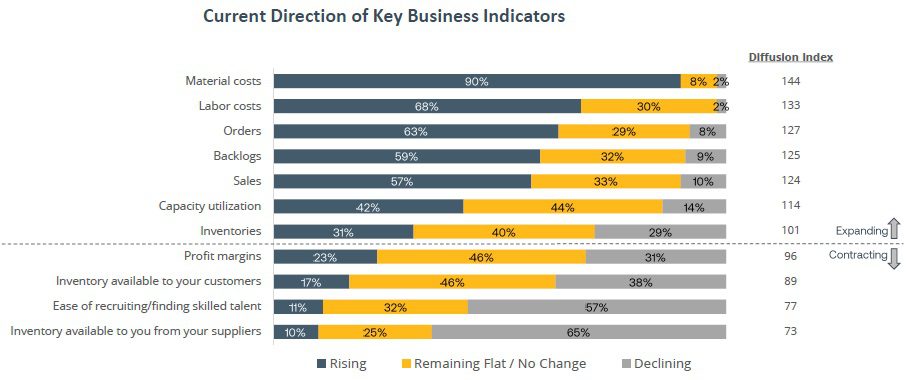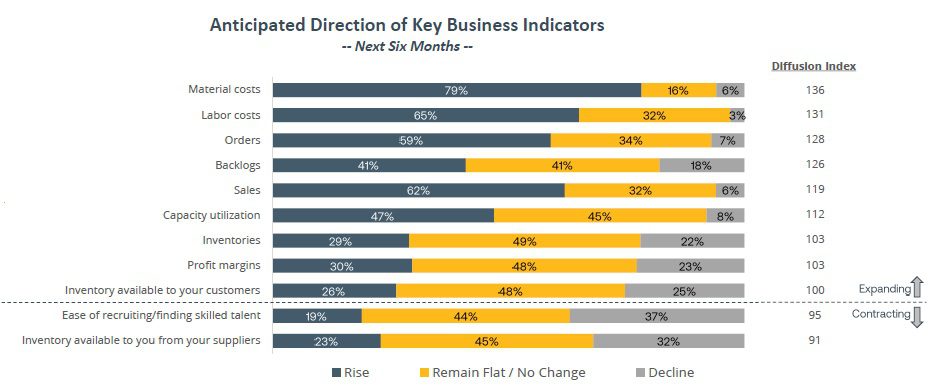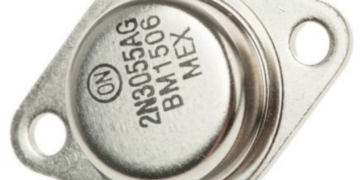 Electronic component pricing forecast graph
Electronic component pricing forecast graph
If the recent history of electronic component pricing can be viewed as representative, increasing costs would appear to the trend. It is informative to look at cost drivers for components and the boards on which they are utilized to understand the significance of this. From these perspectives, we should derive a means of best mitigating price changes—especially increases—for electronic parts.
Pricing Trends for Building Circuit Boards
According to a recent IPC survey of PCB manufacturers, business KPI trends are mixed, as shown in the figure below.

Fig. 1 Current KPIs for PCBA CMs
As indicated on the graph, most companies say orders and sales are increasing. Typically, these would be strong markers for increased profits. However, only slightly more than 20% of CMs report a growing profit margin. This seems to be primarily due to rising costs for labor and materials, which include components.
Factors That Drive Electronic Component Pricing
When sourcing components for your design, a simple head-to-head price comparison to decide which way to go for your project might be ideal. This can be effective for single components with identical IC manufacturing codes—which indicates the parts were built by the same company but from different distributors.
However, when these prices vary greatly, or you are researching different components with similar performance characteristics, there may be other considerations you should be aware of, as listed below, that may influence electronic component pricing differences.
Cost Drivers for Electronic Component Pricing
- Manufacturer reputation
Parts built by manufacturers that have a reputation for producing high-quality, reliable
parts—examples include TI, Vishay, Analog Devices, Trinamic, Maxim,
STMicroelectronics and Toshiba—may be higher priced; however, you can be assured
they are true to datasheet specifications.
- Component utilization
Similar to manufacturer reputation, but with a different impact, components that have
been around for a long time and used by developers for many applications tend to have
lower prices than when they were introduced due to high sales volume.
- Part materials
Electronic component pricing is also significantly influenced by the quality of materials
used to manufacture them. Often you can find similar parts cheaper, due to the use of
cheaper materials.
- Obsolescence
All components have a product lifecycle, at the end of which a newer, more advanced
part typically takes its place. This period can be a few years to decades, depending upon
technological development and application demands. Distributors will often lower prices
to clear substantial inventories of these types of components.
- Availability
Referring to Fig. 1, we see that while material costs are increasing, inventories are
mostly declining. This is a reflection of the global component shortage that is impacting
PCBA development across many industries—the hardest hit are automotive and medical
devices.
All but the last cost driver for electronic component pricing listed above are normal, albeit not constant. However, the component shortage is an unplanned contingency that will likely continue to affect pricing for the foreseeable future.
What is the Forecast for Component Prices?
We can utilize CM responses to the IPC survey—captured in the graph below—for some guidance on the future for electronic component pricing.

Predicted KPIs for PCBA CMs
Not surprisingly, materials costs significantly impacted component shortages are predicted to continue to rise. Therefore, it is incumbent upon you to devise a plan or strategy to help offset the impact of this prediction.
Securing Your Component Supply Chain Against Fluctuating Prices
As shown in the previous section, prices for components can rise or fall for various reasons. However, a major cost driver that is almost universally predicted to continue is the current component shortages, which means that component costs will continue to increase.
How to Mitigate Increasing Electronic Component Pricing
- Buy in bulk
As components are expected to continue to rise and guard against the unavailability of critical parts, it is a good idea to bulk buy. Yes, there may be some risk of overstocking; however, when compared against not being able to fill customer orders, it is likely worth it. Moreover, unless the components are highly specialized, they can be repurposed for other board designs if it becomes necessary.
- Do not employ a Just-in-Time (JIT) development strategy
JIT typically refers to a lean manufacturing process utilized to shorten process times within development and reduce costs. Component procurement should be streamlined as much as possible to what will actually fulfill the latter. Unfortunately, in the present climate, this can backfire and result in backlogs for components.
- Employ techniques to improve the efficiency of your board development process
Increasing component costs can also be mitigated by reducing costs and/or time in other areas of development. For example, if prototyping perform simulations—signal integrity and thermal, for example—during design to minimize the number of board spins required to achieve a production-ready design. Employing PCB testing by your CM may also be used to lower post-design validation testing by a third party.
The suggested actions above and other PCBA development optimization steps will help secure your supply chain and offset the unpredictability of electronic component pricing during the current global parts shortage.
If you’re looking for CAD models for common components, the best PCBA design advice or relevant information that you can use; such as what affects electronic component pricing, Ultra Librarian helps by compiling all your sourcing and CAD information in one place.
Working with Ultra Librarian sets up your team for success to ensure streamlined and error-free design, production, and sourcing. Register today for free.







